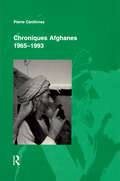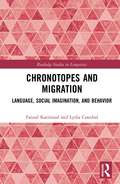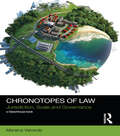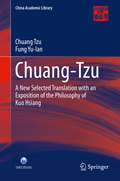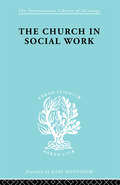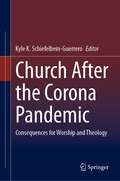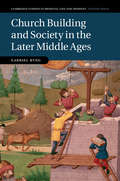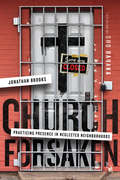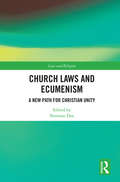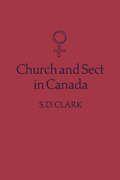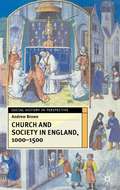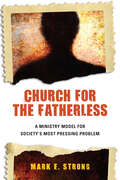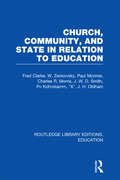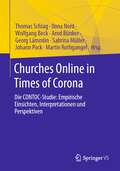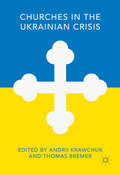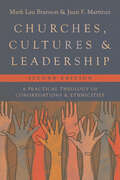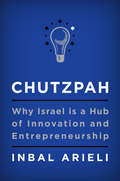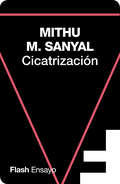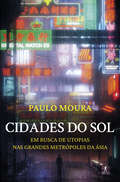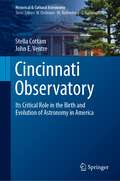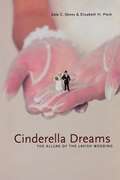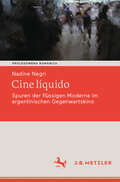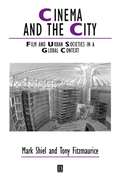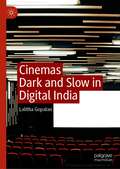- Table View
- List View
Chronicles of a Global City: Speculative Lives and Unsettled Futures in Bengaluru
by Malini RanganathanTracking Bengaluru&’s dramatic urban transformation through the entanglements of finance, land frenzy, real estate volatility, and livelihood upheavals Over the past two decades, Bengaluru&’s exploding real estate sector and massive infrastructure investments have led to land speculation targeting working-class neighborhoods and agricultural land for development. Chronicles of a Global City turns Bengaluru inside out to examine its &“world-city&” transformation that stimulated rapid urbanization and unbounded growth. Moving the spotlight away from the urban elites and &“new middle class,&” this book explores how people caught up in the whirlwinds of change in Bengaluru—from construction laborers, street vendors, domestic workers, and platform delivery workers to small-time property brokers, petty landlords, and local politicians—experience, struggle, aspire, invent, strive, and speculate to make a livable city for themselves. Grounded in long-term ethnographic research and activist experiences, Chronicles of a Global City vividly illuminates the multifaceted entanglements of finance capital, real estate markets, livelihood struggles, and fraying ecologies in urban and peri-urban Bengaluru. Its anchoring concept, &“speculative urbanism,&” provides a powerful, innovative lens for understanding the risk-laden practices of leveraging land, labor, and resources for the promise of future profit. Contributors: Hemangini Gupta, Pierre Hauser, Priyanka Krishna, Eesha Kunduri, Kaveri Medappa, Usha Rao, Shaheen Shasa, Swathi Shivanand, Vinay K. Sreenivasa.
Chroniques Afghanes 1965-1993
by Pierre CentlivresConseiller au Musee national de Kaboul de 1964 a 1966, l'auteur entreprend ensuite, en compagnie de sa femme Micheline Cent livres-Demont, ethnologue elle aussi, de nombreux sejours de recherche en Afghanistan. A Tashqurghan tout d'abord, petite ville du Turkestan, dont ii etudie le bazar, l'organisation socio economique et le role dans les relations entre le monde rural et le marche national. Au debut des annees 70, ii effectue des en quetes sur les identites collectives et les relations interethniques dans le Nord de l'Afghanistan. Apres le coup d'Etat communiste de 1978 et l'intervention sovietique, Pierre Centlivres est charge de plusieurs missions de recherche parmi les refugies afghans au Pakistan et en Iran. Dans ces Chroniques Afghanes, l'auteur remonte dans le temps et reconstruit par la memoire les premiers jours sur le terrain, decrit les metamorphoses du jeune chercheur dans la duree, tel qu'il est vu et evalue par ceux qu'il etait venu etudier. II relate les relations intermittentes entre les habitants de Tashqurghan et lui, les retours successifs, qui permettent peu apeu de donner un sens nouveau aux premieres recherches et aux pre mieres rencontres. II retrace les transformations de la petite ville et la destruction de son bazar pendant la guerre, ainsi que l'exode de ses artisans et commer ants, pour evoquer enfin, avatar qui succede a bien d'autres, une reconstruction toute recente.
Chronotopes and Migration: Language, Social Imagination, and Behavior (Routledge Studies in Linguistics)
by Farzad Karimzad Lydia CatedralIn Chronotopes and Migration: Language, Social Imagination, and Behavior, Farzad Karimzad and Lydia Catedral investigate migrants’ polycentric identities, imaginations, ideologies, and orientations to home and host countries through the notion of chronotope. The book focuses on the authors’ ethnographically situated research with two migrant populations – Iranians and Uzbeks in the United States – to highlight the institutional constraints and individual subjectivities involved in transnational mobility. The authors provide a model for how the notion of cultural chronotope can be applied to the study of language and migration at multiple scale levels, and they showcase a coherent picture of the ways in which chronotopes organize various aspects of migrant life. This book is a critical contribution to the conversation surrounding the sociocultural-linguistic uses of the chronotope, demonstrating its applicability not only to theorizing migration but also to theorizing language and social life more broadly.
Chronotopes of Law: Jurisdiction, Scale and Governance (Social Justice)
by Mariana ValverdeThis book develops a new framework for analyzing the spatio-temporal workings of law and other forms of governance. Chronotopes of Law argues that studies of law and governance can be reinvigorated by drawing on a bundle of quite heterogenous analytical tools that do not have a single provenance or a single political or normative aim but that work well in combination. Analyses of legal temporality carried out by anthropologists and studies of law and space undertaken by geographers and legal scholars have proliferated in recent years, but these research traditions have remained largely separate. By adapting notions such as intertextuality, dialogism, and the ‘chronotope’ from Mikhail Bakhtin, notions designed specifically to synthesize considerations of space and time in a framework that is open-ended, interactive and dynamic, Mariana Valverde develops an anti-metaphysical theory and method for legal studies. This approach will be useful both to theorists and to researchers seeking to illuminate the actual workings of law and other forms of governance. Indeed, a key aim of the book is to break down the institutional and disciplinary barriers that prevent theorists from learning from empirical studies and viceversa. Written by one of the foremost sociolegal scholars writing today, this theoretically innovative work constitutes a major contribution to contemporary studies in law and society.
Chuang-Tzu: A New Selected Translation with an Exposition of the Philosophy of Kuo Hsiang (China Academic Library)
by Chuang Tzu Fung Yu-LanThis book reprints an ancient Chinese work from the late Warring States period (3rd century BC) that contains stories and anecdotes exemplifying the carefree nature of the ideal Taoist sage. Chuang Tzu's philosophy represents the main current of Taoist teachings, and his text is widely regarded as both deeply insightful and a great achievement in the Chinese poetical essay form. The version presented was translated by Feng Yu-lan, the famous Chinese philosopher, who puts more emphasis on Chuang Tzu's philosophy than do previous attempts. William James once said that every great philosopher has a personal vision. When one has grasped that vision, the whole system can be easily understood. And Crocé once said that the greater a philosophical system is, the simpler the central idea. Although the present translation is limited to the first seven chapters of Chuang Tzu's writings, it accurately conveys his main vision and ideas.
Church & Social Work Ils 181 (International Library of Sociology)
by M. Penelope Hall Ismene V HowesThis is Volume I in a series of eighteen on Public Policy, Welfare and Social Work. Originally published in 1965, this is a study of moral welfare work undertaken by the Church of England.
Church After the Corona Pandemic: Consequences for Worship and Theology
by Kyle K. Schiefelbein-GuerreroThis book explores the church’s engagement with digital worship as a result of the pandemic and guides readers in considering how the means of grace distributed online might be theologically framed. Organized around the four-fold pattern of Sunday worship—Gathering, Word, Meal, Sending—this collection of essays provides source material for both theological discernment and practical implementation. Topics include (preparing and) offering a theology of worship no matter the modality, engaging the questions of embodiment as related to the incarnation of Christ, and looking at the theology of church in a digital age. Renowned scholars in the field explore how online worship provides for the visibility of the gospel, how to lament and pray in the midst of pandemic and future crises, and how the mission of the church through its worship can continue regardless of physical restrictions. This timely collection appeals to researchers, professionals, and practitioners in the field.
Church Building and Society in the Later Middle Ages (Cambridge Studies in Medieval Life and Thought: Fourth Series #107)
by Gabriel ByngThe construction of a church was undoubtedly one of the most demanding events to take place in the life of a medieval parish. It required a huge outlay of time, money and labour, and often a new organisational structure to oversee design and management. Who took control and who provided the financing was deeply shaped by local patterns in wealth, authority and institutional development - from small villages with little formal government to settlements with highly unequal populations. This all took place during a period of great economic and social change as communities managed the impact of the Black Death, the end of serfdom and the slump of the mid-fifteenth century. This original and authoritative study provides an account of how economic change, local politics and architecture combined in late-medieval England. It will be of interest to researchers of medieval, socio-economic and art history. Offers fascinating insights into the human story behind the construction of England's parish churches, and shows how profoundly political it was. Explores who financed the construction of parish churches and how this changed during the medieval period. Sets medieval architecture in the context of contemporary society, economics and local politics.
Church Forsaken: Practicing Presence in Neglected Neighborhoods
by Jonathan Brooks Sho Baraka"There are no God-forsaken places, just church-forsaken places." —Jon Fuller, OMF InternationalChurch Forsaken
Church Laws and Ecumenism: A New Path for Christian Unity (Law and Religion)
by Norman DoeWritten by experts from within their communities, this book compares the legal regimes of Christian churches as systems of religious law. The ecumenical movement, with its historical theological focus, has failed to date to address the role of church law in shaping relations between churches and fostering greater mutual understanding between them. In turn, theologians and jurists from the different traditions have not hitherto worked together on a fully ecumenical appreciation of the potential value of church laws to help, and sometimes to hinder, the achievement of greater Christian unity. This book seeks to correct this ecumenical church law deficit. It takes account of the recent formulation by an ecumenical panel of a Statement of Principles of Christian Law, which has been welcomed by Pope Francis and the Ecumenical Patriarch of Constantinople, leader of the Orthodox Church worldwide, as recognizing the importance of canon law for ecumenical dialogue. This book, therefore, not only provides the fruits of an understanding of church laws within ten Christian traditions, but also critically evaluates the Statement against the laws of these individual ecclesial communities. The book will be an essential resource for scholars of law and religion, theology, and sociology. It will also be of interest to those working in religious institutions and policy-makers.
Church and Sect in Canada: Third Edition
by S. D. ClarkThe need for a third printing of Church and Sect in Canada reflects the continuing interest in this pioneer study of the development of religious organization in Canadian society. It is one of three studies by Professor Clark; the other two, The Social Development of Canada and Movements of Political Protest in Canada show how the opening up of new areas of development in Canadian society led to the growth of new forms of social organization challenging the position and authority of established forms. In the field of religious organization, it was the evangelical religious sect which mounted the opposition to the established church denominations. By examining religious developments in Canada from 1760 to 1914 Professor Clark demonstrates how every move on the part of established church groups to secure, by union and other means, a greater degree of order in religious organization was accompanied by the rise of new forms of religious organization in those areas of society undergoing rapid change.In face of developments in our society today this study gains particular significance. The strong influence of the functionalist school in sociology in the United States and Canada in the 1950s and early 1960s fitted the mood of a society caught up in economic prosperity and ready to accept the comfortable assumption that the troublous upheavals in economic, political, religious, and other forms of social organization experienced in earlier decades would never recur. As a historical sociologist, Professor Clark gives emphasis to the importance of viewing developments in historical perspective. His examination of the basis of protest in religious organization in Canadian society over a period of nearly two centuries helps us understand the basis of protest, whatever form it takes, in society today.
Church and Society in England, 1000–1500
by Andrew BrownWhat impact did the Church have on society? How did social change affect religious practice? Within the context of these wide-ranging questions, this study offers a fresh interpretation of the relationship between Church, society and religion in England across five centuries of change. Andrew Brown examines how the teachings of an increasingly 'universal' Church decisively affected the religious life of the laity in medieval England. However, by exploring a broad range of religious phenomena, both orthodox and heretical (including corporate religion and the devotional practices surrounding cults and saints) Brown shows how far lay people continued to shape the Church at a local level. In the hands of the laity, religious practices proved malleable. Their expression was affected by social context, status and gender, and even influenced by those in authority. Yet, as Brown argues, religion did not function simply as an expression of social power - hierarchy, patriarchy and authority could be both served and undermined by religion. In an age in which social mobility and upheaval, particularly in the wake of the Black Death, had profound effects on religious attitudes and practices, Brown demonstrates that our understanding of late medieval religion should be firmly placed within this context of social change.
Church for the Fatherless: A Ministry Model for Society's Most Pressing Problem
by Mark E. StrongFatherlessness has reached epidemic levels. Forty percent of children in the U.S. will go to bed tonight in a home without a father. Studies show that people without fathers are at much higher risk for low educational performance, drug abuse, crime and poverty. Fatherlessness is rampant in our churches as well. When planting his church, Mark Strong realized that fifteen of twenty core leaders, whether they were in their twenties or sixties, white or black, had grown up without an active father figure in their lives. And he determined to make a difference in the lives of the next generation. The church is uniquely positioned to minister to the fatherless, both within its own community and in society at large. Strong shows how we can make our churches places of refuge for our nation's fatherless. Churches can reveal a true picture of God as loving Father through mentoring both children and dads, meeting the practical needs of children, and much more. By embedding key values into your congregational culture, your church can become a church for the fatherless. Be part of the solution. Are you ready to make a difference?
Church, Community and State in Relation to Education: Towards a Theory of School Organization (Routledge Library Editions: Education)
by Fred ClarkeThis volume was originally prepared for the World Conference on Church, Community and State held in Oxford in 1937. Its aim was to understand the nature of the vital conflict between the Christian faith and the secular tendencies of the early twentieth century, particularly in relation to education. The book also analyses the responsibilities of the Church in this struggle.
Churches Online in Times of Corona: Die CONTOC-Studie: Empirische Einsichten, Interpretationen und Perspektiven
by Wolfgang Beck Arnd Bünker Thomas Schlag Ilona Nord Georg Lämmlin Sabrina Müller Johann Pock Martin RothgangelDie CONTOC-Studie hat in ökumenischer und internationaler Ausrichtung die digitale kirchliche Praxis unter den Bedingungen der Corona-Pandemie im Frühsommer 2020 erforscht. Dieser Band dokumentiert die Rahmenbedingungen und Umfrageergebnisse in den beteiligten Ländern. Daran schließen sich Perspektiven zu den zukünftigen Herausforderungen für die digitale Angebotspraxis und das Selbstverständnis der kirchlichen Akteur*innen an. Churches Online in Times of Corona. The CONTOC study: Empirical insights, interpretations and perspectives The CONTOC study has explored digital church practice under the conditions of the COVID-19 pandemic in the early summer of 2020 in an ecumenical and international way. This volume documents the framework conditions and survey results in the participating countries. This is followed by perspectives on the future challenges for the digital practice and the selfunderstanding of church actors.
Churches in the Ukrainian Crisis
by Andrii Krawchuk and Thomas BremerThis volume explores the churches of Ukraine and their involvement in the recent movement for social justice and dignity within the country. In November of 2013, citizens of Ukraine gathered on Kyiv's central square (Maidan) to protest against a government that had reneged on its promise to sign a trade agreement with Europe. The Euromaidan protest included members of various Christian churches in Ukraine, who stood together and demanded government accountability and closer ties with Europe. In response, state forces massacred over one hundred unarmed civilians. The atrocity precipitated a rapid sequence of events: the president fled the country, a provisional government was put in place, and Russia annexed Crimea and intervened militarily in eastern Ukraine. An examination of Ukrainian churches’ involvement in this protest and the fall-out that it inspired opens up other questions and discussions about the churches’ identity and role in the country’s culture and its social and political history. Volume contributors examine Ukrainian churches’ historical development and singularity; their quest for autonomy; their active involvement in identity formation; their interpretations of the war and its causes; and the paths they have charted toward peace and unity.
Churches, Cultures, and Leadership: A Practical Theology of Congregations and Ethnicities
by Mark Lau Branson Juan F. MartinezWe live in a culturally diverse society. As the church continues to heed Christ's call to reflect the multiethnic character of his people, pastors and lay leaders need to gain skills and competencies to serve in multicultural contexts, both inside and beyond their congregations. With this book, Mark Lau Branson and Juan F. Martínez equip leaders to create environments that make God's reconciling initiatives apparent in church life and in missional engagement with their neighborhoods and cities. Drawing on courses they've taught at Fuller Theological Seminary, Branson and Martínez take an interdisciplinary approach that integrates biblical and theological study with sociology, cultural anthropology, leadership studies, and communications. The result is a rich blend of astute analysis and guidance for the practical implementation of a deeper intercultural life for the church. Case studies, Bible studies, and exercises for personal and group reflection address real-life challenges and opportunities that arise in multiethnic contexts. Churches, Cultures, and Leadership offers not a static model but a praxis of paying attention, study, and discernment that can lead to genuine reconciliation and shared life empowered by the gospel. This new edition is updated throughout to address current trends and sources, particularly emphasizing the continuing power of racism and how churches should respond.
Chutzpah: Why Israel Is a Hub of Innovation and Entrepreneurship
by Inbal ArieliDiscover the secret behind how Israel, a tiny country with the highest concentration of start-ups per capita worldwide, is raising generations of entrepreneurs who are disrupting markets around the globe and bringing change to the world.Dubbed “Silicon Wadi,” Israel ranks third in the World Economic Forum Innovation Rating. Despite its small size, it attracts more venture capital per capita than any other country on the planet. What factors have led to these remarkable achievements, and what secrets do Israeli tech entrepreneurs know that others can learn? Tech insider Inbal Arieli goes against the common belief that Israel’s outstanding economic accomplishments are the byproduct of its technologically advanced military or the result of long-standing Jewish traditions of study and questioning. Rather, Arieli gives credit to the unique way Israelis are raised in a culture that supports creative thinking and risk taking. Growing up within a tribal-like community, Israelis experience childhoods purposely shaped by challenges and risks—in a culture that encourages and rewards chutzpah. This has helped Israelis develop the courage to pursue unorthodox, and often revolutionary, approaches to change and innovation and is the secret behind the country’s economic success.While chutzpah has given generations of Israelis the courage to break away from conventional thinking, the Israeli concept balagan—messiness in Hebrew—is at the root of how Israelis are taught to interact with the world. Instead of following strict rules, balagan fosters ambiguity, encouraging the development of the skills necessary for dealing with the unpredictability of life and business. Living with balagan provides Israelis with the opportunity to constantly practice the soft skills defined by the World Economic Forum as the Skills for the Future, as balagan promotes creativity, problem-solving, and independence—key characteristics of successful entrepreneurs.By revealing the unique ways in which Israelis parent, educate and acculturate, Chutzpah offers invaluable insights and proven strategies for success to aspiring entrepreneurs, parents, executives, innovators, and policymakers.
Cicatrización
by Mithu M. SanyalUn duro análisis de la cultura de la violación y sus implicaciones. En los textos elegidos para este Flash, «Vergüenza» y «Cicatrización», hallamos un retrato estremecedor de la cultura de la violación, en la que el lenguaje desempeña un papel crucial. Por lo tanto, resulta necesario cuestionar el significado de palabras como víctima o trauma. Tal como demuestra, Mithu M. Sanyal (Violación, Reservoir Books) en la sociedad actual aún hay una clara tendencia a relacionar la vergüenza con la violación: se espera que la víctima se sienta culpable. Sin embargo, no hay una única manera de reaccionar al trauma y, por lo tanto, tampoco puede haber «un único tipo de víctima». «El trauma no solo tiene una dimensión personal, sino también social y política»
Cidades do Sol: À procura de utopias nas grandes metrópoles da Ásia
by Paulo MouraCom que sonham os habitantes do futuro. Paulo Moura viaja pelas megacidades da Ásia Oriental em busca da utopia. Uma reflexão eloquente sobre o mundo contemporâneo. «A viagem é um lugar de reflexão, mas também o lugar de todas as ilusões. Esta - a viagem de um português pela Ásia em busca de utopias - é decerto muito antiga.» A influencer que criou uma cidade imaginária em Jacarta. O escritor de ficção científica da Silicon Valley do Oriente. O nonagenário filipino, nomeado para o Nobel da Literatura, que está a escrever um romance sobre Inteligência Artificial. O outro escritor, em Hong Kong, que imaginou fazer upload da consciência humana para um computador. O casal chinês autor de um livro proibido que vendeu 7 milhões em fotocópias. O homem que liderou a revolta da China rural. O fotógrafo que forçou o governo vietnamita a aprovar a lei sobre o casamento gay. A rainha da Internet em Manila. O filósofo de Java com uma teoria global. O famoso rapper indiano que fez carreira apelando à submissão dos jovens… Quem mais nos arriscamos a encontrar numa aventura pelos grandes espaços urbanos da Ásia contemporânea? Não é preciso muito para entrar na alma de Bangalore, Jacarta, Saigão, Manila, Seul, Hong Kong, Macau, Shenzen, Xangai, Pequim, Linquan ou Chongqin: uma mala pequena, duas mudas de roupa, um par de sapatos, uma escova de dentes, caneta e bloco de notas, telemóvel, portátil, passaporte e um pretexto para a viagem: procurar utopias nas cidades do futuro.
Cincinnati Observatory: Its Critical Role in the Birth and Evolution of Astronomy in America (Historical & Cultural Astronomy)
by Stella Cottam John E. VentrePreviously dependent on Europe for scientific knowledge, the United States came into its own during the nineteenth century. A prime example of this is evident in the establishment of the Cincinnati Observatory, in Cincinnati, Ohio. Funded by the citizenry of that city, it was initiated, with ceremony, by the oration by former President John Quincy Adams, at the laying of the cornerstone in 1843.In this book, you will read about the Cincinnati Observatory's most notable contributions, big and small, that were made over the course of its years in existence. You will learn about the Observatory's role in primitive weather forecasting, star cataloging, and even advancements it helped to create during World War II. Now known as the Cincinnati Observatory Center, it is a functional observatory and a dedicated center of astronomy education for all ages. It continues to contribute a rich cultural and scientific history to its community and nation.
Cinderella Dreams: The Allure of the Lavish Wedding
by Elizabeth H. Pleck Cele C. OtnesFor anyone who has ever wondered about the meanings behind a white dress, a diamond ring, rice, and traditions such as cake cutting, bouquet tossing, and honeymooning, this book offers an entertaining and enlightening look at the historical, social, and psychological strains that come together to make the lavish wedding the most important ritual in contemporary consumer culture.
Cine líquido: Spuren der flüssigen Moderne im argentinischen Gegenwartskino (Prolegomena Romanica. Beiträge zu den romanischen Kulturen und Literaturen)
by Nadine NegriMitte der 90er Jahre wendet sich in Argentinien eine neue Kinoströmung radikal von den bis dato gültigen, vom Hollywoodkino inspirierten und pathetischen Filmstandards ab. Die von der Kritik schnell unter dem Sammelbegriff „Nuevo Cine Argentino“ zusammengefassten Werke zeichnen sich jedoch neben minimalistischen Tendenzen und Parallelen zum italienischen Neorealismus und der französischen „Nouvelle Vague“ insbesondere durch ihre Heterogenität aus. Die vorliegende Studie versteht das „Nuevo Cine Argentino“ als Manifestation einer ganzheitlichen soziokulturellen und geistigen Transformation: Die Entstehung des neuen argentinischen Films fällt mit einer Verflüssigung (Zygmunt Bauman), einer umfassenden Dynamisierung, Dezentralisierung und Individualisierung der westlichen Gesellschaften um die Jahrtausendwende zusammen. Die Studie geht von der Hypothese aus, dass sich gerade in den Eigenschaften des Flüssigen – Flexibilität, Flüchtigkeit und Formlosigkeit – ein Schlüssel für die Beschreibung des „Nuevo Cine Argentino“ findet. Sowohl inhaltlich auch formell finden sich in den Filmen Spuren der flüssigen Moderne. Anhand von zahlreichen bekannten, aber auch weniger rezipierten Filmen der letzten 25 Jahre erarbeitet die Autorin Charakteristika eines „cine líquido“. Dieses wird präsentiert als ein instrumenteller Kinomodus, der für die Darstellung von sozialen Verflüssigungsprozessen genutzt werden kann.
Cinema and the City
by Mark Shiel Tony FitzmauriceThis book brings together the literature of urban sociology and film studies to explore new analytical and theoretical approaches to the relationship between cinema and the city, and to show how these impact on the realities of life in urban societies.
Cinemas Dark and Slow in Digital India
by Lalitha GopalanThis book provides a sustained engagement with contemporary Indian feature films from outside the mainstream, including Aaranaya Kaandam, I.D., Kaul, Chauthi Koot, Cosmic Sex, and Gaali Beeja, to undercut the dominance of Bollywood focused film studies. Gopalan assembles films from Bangalore, Chennai, Delhi, Kolkata, and Trivandrum, in addition to independent productions in Bombay cinema, as a way of privileging understudied works that deserve critical attention. The book uses close readings of films and a deep investigation of film style to draw attention to the advent of digital technologies while remaining fully cognizant of ‘the digital’ as a cryptic formulation for considering the sea change in the global circulation of film and finance. This dual focus on both the techno-material conditions of Indian cinema and the film narrative offers a fulsome picture of changing narratives and shifting genres and styles.

